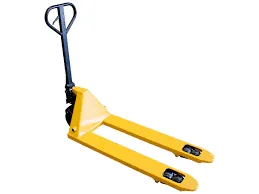


Safety Equipment for Working at Heights
Working at heights presents unique challenges and risks that require diligent attention to safety. It involves tasks performed on platforms, rooftops, ladders, and scaffolds, often putting workers at risk of falls, which are a leading cause of workplace injuries and fatalities. To mitigate these risks, a comprehensive approach must be implemented, focusing on proper safety equipment, training, and adherence to best practices.
Understanding the Risks
The potential hazards associated with working at heights include falls from ladders, scaffolds, or roofs, as well as potential hazards from overhead objects. Understanding these risks is the first step in creating a safe working environment. Employers must conduct thorough risk assessments before any work begins, identifying specific job hazards and determining the necessary protective measures.
Essential Safety Equipment
The right safety equipment is crucial for protecting workers. Here are some of the most important types of safety gear for working at heights
1. Personal Protective Equipment (PPE) PPE is the first line of defense for workers at heights. This includes helmets, gloves, safety glasses, and high-visibility clothing. Helmets protect against falling objects, while gloves provide grip and protection against cuts.
2. Fall Arrest Systems These systems are crucial in preventing falls. They comprise a full-body harness, connecting lanyard, and anchor points. A well-fitted harness ensures the worker is securely attached to an anchor point. When a fall occurs, the system reduces the impact force on the body.
3. Guardrails and Safety Barriers For scaffolding and rooftops, guardrails and safety barriers are essential. These structures prevent workers from accidentally falling over the edge. They should be sturdy and installed at the correct height according to safety regulations.
4. Scaffolding Properly erected scaffolding provides a stable work platform. It should be inspected before use to ensure it is in good condition and assembled according to the manufacturer's specifications.
5. Ladders When using ladders, it’s vital to choose the right type and ensure they are in good condition. They should be placed on stable surfaces, and workers should maintain three points of contact while climbing.
6. Safety Nets For construction sites, safety nets can be an effective way to catch workers if they fall. They should be installed below the work area and checked regularly for wear and tear.

Training and Compliance
Equipping workers with safety gear is not enough; proper training is equally essential. All workers must receive training on how to use safety equipment correctly. This includes understanding how to inspect gear for damage, correct usage of fall protection systems, and emergency procedures in case of a fall.
Moreover, adherence to regulatory standards cannot be overlooked. Organizations such as the Occupational Safety and Health Administration (OSHA) set forth guidelines to help safeguard workers. Compliance with these regulations not only ensures the safety of workers but also protects employers from legal liabilities.
Best Practices for Safety
To ensure the safety of workers at heights, certain best practices should be followed
1. Plan Ahead Before commencing any work at heights, plan the job thoroughly. Assess risks and implement necessary safety measures.
2. Regular Inspections Safety equipment must be inspected regularly, and any worn or damaged items should be replaced immediately.
3. Buddy System Implement a buddy system where workers pair up, fostering a culture of safety. A second set of eyes can help monitor safety practices.
4. Emergency Preparedness Establish an emergency plan that includes the procedures to follow in case of a fall or other accidents. Ensure all workers are familiar with these procedures.
5. Maintain a Safe Work Environment Keep the work area clean and organized to minimize the risks of slips, trips, and falls.
Conclusion
Working at heights can be hazardous, but with the proper safety equipment and protocols in place, the risks can be significantly reduced. It is essential for employers to prioritize worker safety by providing appropriate gear, training, and ensuring compliance with regulations. By fostering a culture of safety and vigilance, we can protect workers from the dangers associated with heights, allowing them to perform their jobs safely and efficiently.



